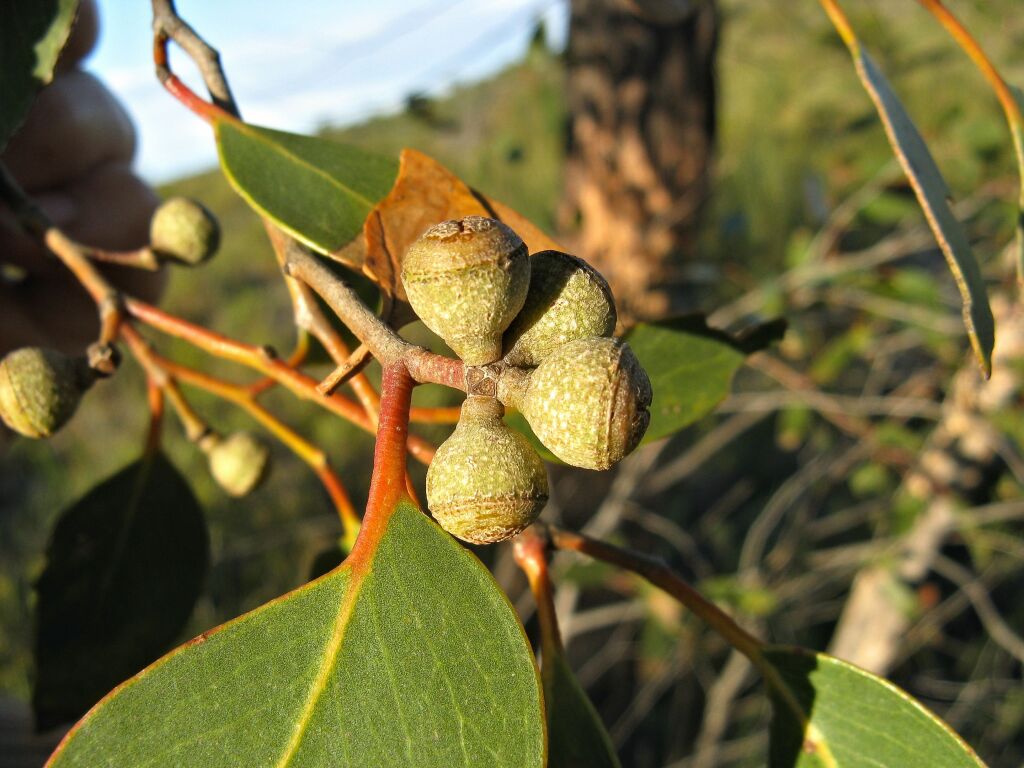Eucalyptus arenacea
Marginson & P.Ladiges Desert StringybarkTree or mallee 2–10 m tall; bark rough to small branches in trees, coarsely fibrous; in mallees, shortly fibrous, to flaky, with smooth branches. Juvenile leaves sessile or shortly petiolate, opposite for few pairs, scabrous above and below, then alternate, ovate to broadly lanceolate, to 10 cm long, 4 cm wide, becoming glabrous, glossy, green; adult leaves petiolate, lanceolate, oblique, 6.5–10 cm long, 1.2–2.2 cm wide, concolorous, glossy, green; reticulation sparse, with obscure, irregular, island oil glands. Inflorescences axillary, unbranched; peduncles to 1 cm long, 9–15-flowered; buds pedicellate, clavate, to 1 cm long, 0.4 cm wide, no scar (single operculum); operculum hemispherical or conical; stamens irregularly flexed; anthers dorsifixed, reniform; ovules in 2 vertical rows; flowers white. Fruit pedicellate, hemispherical to truncate-globose, to 0.9 cm long, 1.1 cm diam.; disc level to slightly ascending; valves 3 or 4, slightly exserted; seed dark brown, glossy, smooth, pyramidal but distorted by one curved face, hilum terminal. Flowers Jul.–Jan.
LoM, MuM, Wim, GleP, VVP, GGr, DunT. Also SA. Occurs on sandy ground in Little and Big Deserts, Mt Arapiles and in the Grampians on Mt Stapylton.
Originally included in E. baxteri but differs in the straggly, small form, less conspicuously stringy bark, pedicellate buds and fruit, juvenile leaves that taper to the apex, and its inland distribution in Victoria.
Brooker, M.I.H.; Slee, A.V. (1996). Eucalyptus. In: Walsh, N.G.; Entwisle, T.J., Flora of Victoria Vol. 3, Dicotyledons Winteraceae to Myrtaceae, pp. 946–1009. Inkata Press, Melbourne.
 Spinning
Spinning

